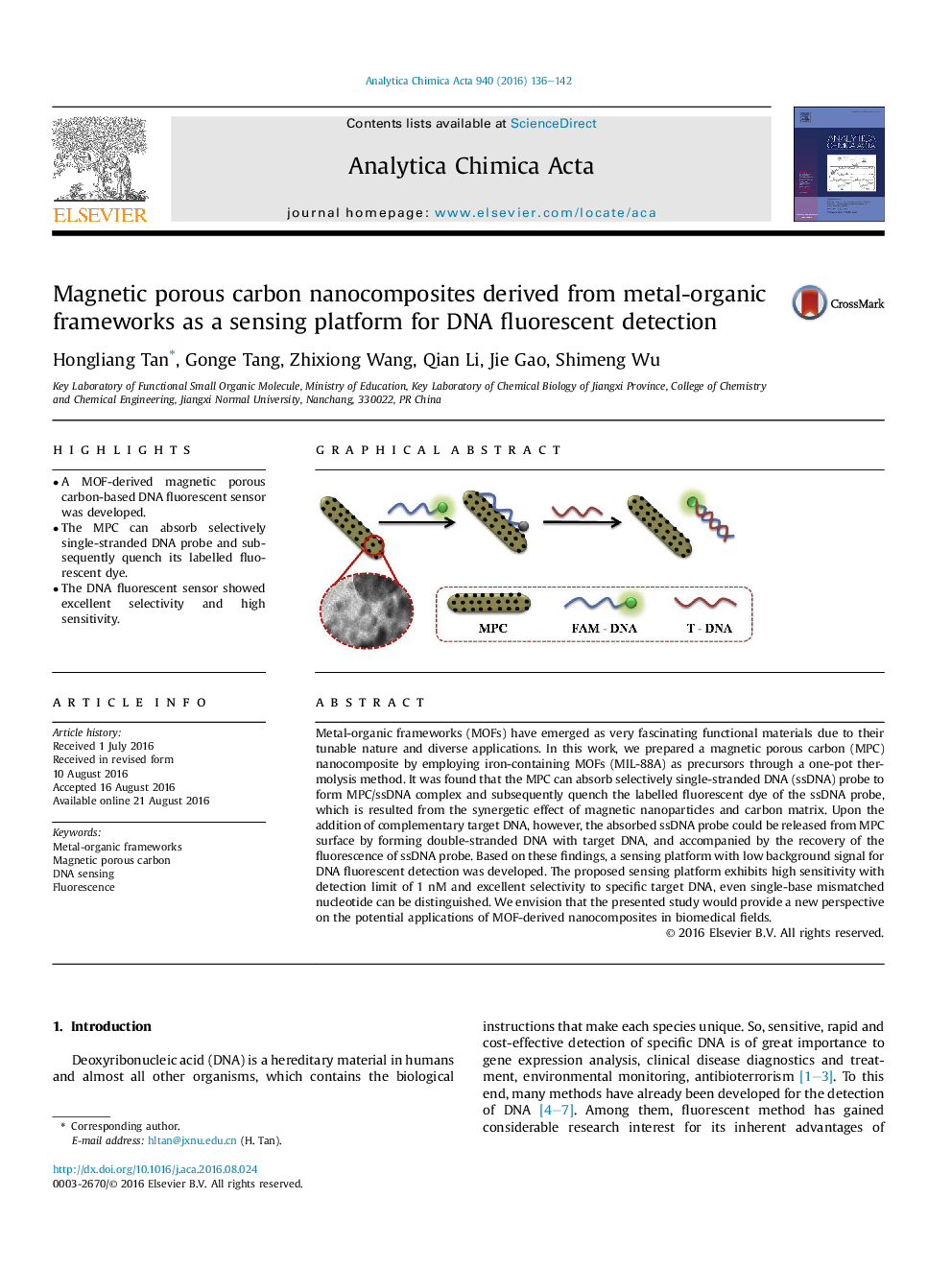| Article ID | Journal | Published Year | Pages | File Type |
|---|---|---|---|---|
| 5131262 | Analytica Chimica Acta | 2016 | 7 Pages |
â¢A MOF-derived magnetic porous carbon-based DNA fluorescent sensor was developed.â¢The MPC can absorb selectively single-stranded DNA probe and subsequently quench its labelled fluorescent dye.â¢The DNA fluorescent sensor showed excellent selectivity and high sensitivity.
Metal-organic frameworks (MOFs) have emerged as very fascinating functional materials due to their tunable nature and diverse applications. In this work, we prepared a magnetic porous carbon (MPC) nanocomposite by employing iron-containing MOFs (MIL-88A) as precursors through a one-pot thermolysis method. It was found that the MPC can absorb selectively single-stranded DNA (ssDNA) probe to form MPC/ssDNA complex and subsequently quench the labelled fluorescent dye of the ssDNA probe, which is resulted from the synergetic effect of magnetic nanoparticles and carbon matrix. Upon the addition of complementary target DNA, however, the absorbed ssDNA probe could be released from MPC surface by forming double-stranded DNA with target DNA, and accompanied by the recovery of the fluorescence of ssDNA probe. Based on these findings, a sensing platform with low background signal for DNA fluorescent detection was developed. The proposed sensing platform exhibits high sensitivity with detection limit of 1Â nM and excellent selectivity to specific target DNA, even single-base mismatched nucleotide can be distinguished. We envision that the presented study would provide a new perspective on the potential applications of MOF-derived nanocomposites in biomedical fields.
Graphical abstractDownload full-size image
